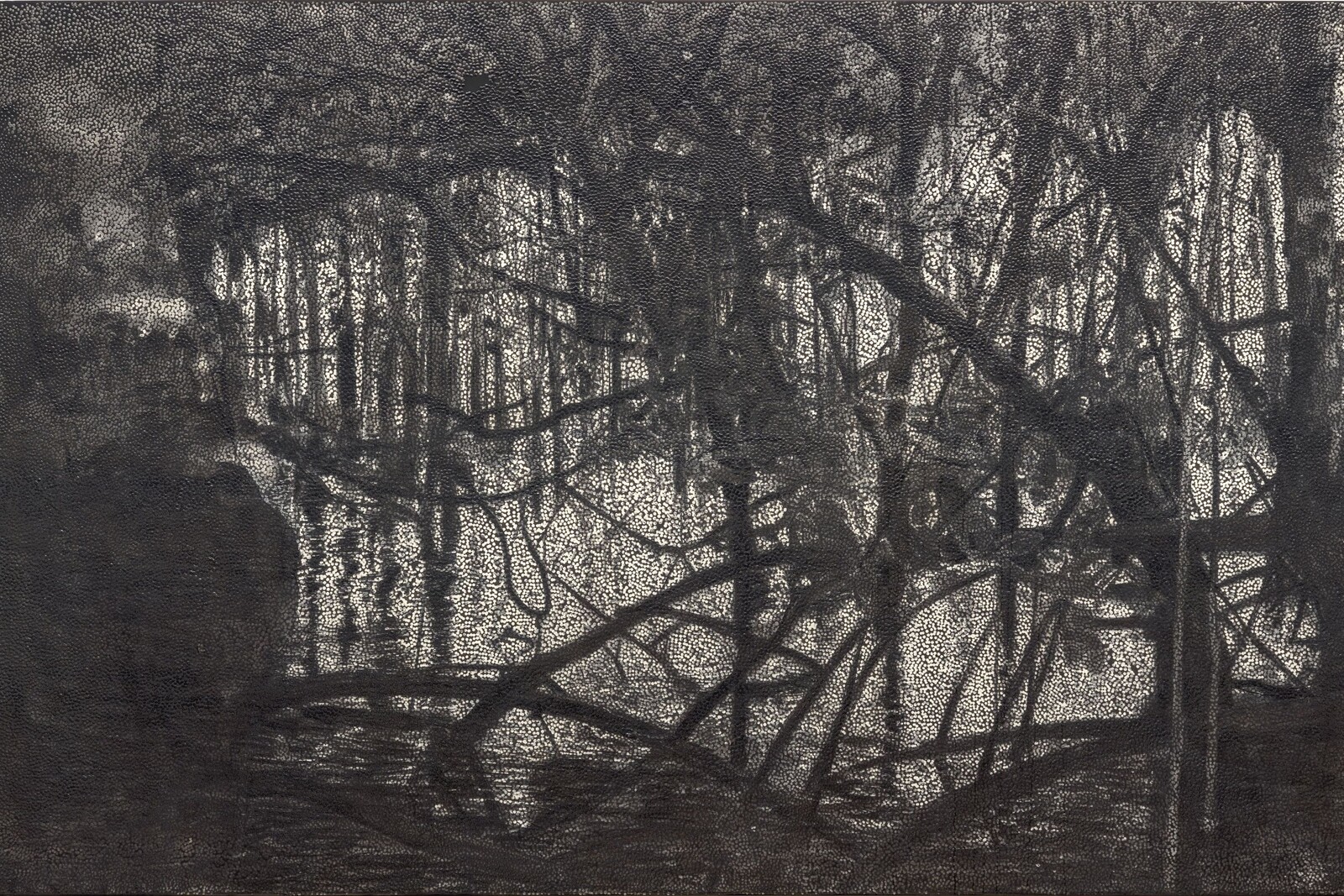January 1–December 31, 2023
Niederkirchnerstraße 7
10963 Berlin
Germany
Hours: Wednesday–Monday 11am–7pm,
Saturday–Sunday 10am–7pm
T +49 30 25486384
presse@gropiusbau.de
As an open space for art and discourse, the Gropius Bau and its 2023 programme aim to reflect on the building’s history and rethink topics such as forms of self-empowerment, the historical pathways of cultural migration, and the politics of breath and the body.
Daniel Boyd: RAINBOW SERPENT (VERSION)
March 24–July 9, 2023
RAINBOW SERPENT (VERSION) is the most comprehensive exhibition of Daniel Boyd’s artistic practice in Europe. Boyd’s image-making counters the colonial narrative of Australia’s history, engages transnational networks of resistance, Indigenous knowledge production and personal family histories, which he reflects in relation to the context and architecture of the Gropius Bau.
An integral part of the exhibition is a public programme that plays out on the floor installation in the atrium.
Curated by Stephanie Rosenthal and Carolin Köchling. Developed in partnership with the Institute of Modern Art, Brisbane.
Indigo Waves and Other Stories: Re-Navigating the Afrasian Sea and Notions of Diaspora
April 7–August 13, 2023
Indigo Waves and Other Stories: Re-Navigating the Afrasian Sea and Notions of Diaspora brings together contemporary artists, musicians, writers and thinkers to shed light on historical, cultural and linguistic links between the continents of Africa and Asia. The exhibition approaches this ocean as a communal horizon from which to read Afrasian (that is, belonging to both Africa and Asia) histories of forced and unforced movement through cultural affiliation, mercantile encounter and colonial empire.
Curated by Natasha Ginwala and Bonaventure Soh Bejeng Ndikung with Michelangelo Corsaro. In partnership with SAVVY Contemporary, Berlin; Zeitz MOCAA, Cape Town; VASL Artists’ Association, Karachi; and BLAK C.O.R.E. (Care of Radical Energy) at the University of Melbourne.
General Idea
September 22, 2023–January 14, 2024
Founded in 1969 in Toronto, General Idea—comprising Felix Partz (1945–1994), Jorge Zontal (1944–1994) and AA Bronson (b. 1946)—interrogated the production, circulation and consumption of images through a broad variety of media. Developed in close collaboration with AA Bronson, a comprehensive retrospective at the Gropius Bau presents more than 200 works from the late 1960s to the early 1990s including major installations as well as publications, videos, drawings, paintings, sculptures and archival material, providing an overview over the development of General Idea’s artistic practice.
Curated by Adam Welch for the National Gallery of Canada and Beatrix Ruf, in collaboration with Zippora Elders, for the Gropius Bau.
Organised by the National Gallery of Canada in collaboration with the Gropius Bau.
Spectres of Bandung: A Political Imagination of Asia-Africa
October 6, 2023–January 14, 2024
In April 1955, representatives from 29 Asian and African states gathered in Bandung, Indonesia to enact shared goals and solidarity after decolonisation. Spectres of Bandung is a research-based exhibition exploring this first large-scale Asian-African Conference that can be considered a catalyst of already existing political and cultural affiliations. Bringing together photographs, paintings, films and archival material, the group show at the Gropius Bau unpacks the spirit of self-determination prevailing during the Bandung Conference.
Curated by Philippe Pirotte, Vera Mey and Zippora Elders in collaboration with an international team of curators.
Artist in Residence
Pallavi Paul: How Love Moves (working title)
2023
How does the post-pandemic world test the lover and their breath? In the second half of 2023, an exhibition of the Gropius Bau’s Artist in Residence 2023 Pallavi Paul will move across the mystical, medical, political, ecological and erotic life of breath.
Curated by Natasha Ginwala.
Preview: Artificial Intelligence at the Gropius Bau
2023
In 2023, the Gropius Bau focuses on tackling AI’s potential for an art institution from two directions: evaluating how it works as an artistic tool, as well as working with AI as a structural support to develop a tool for accessibility. Developed in a transparent process, the different project phases will frequently be shared with the public.







